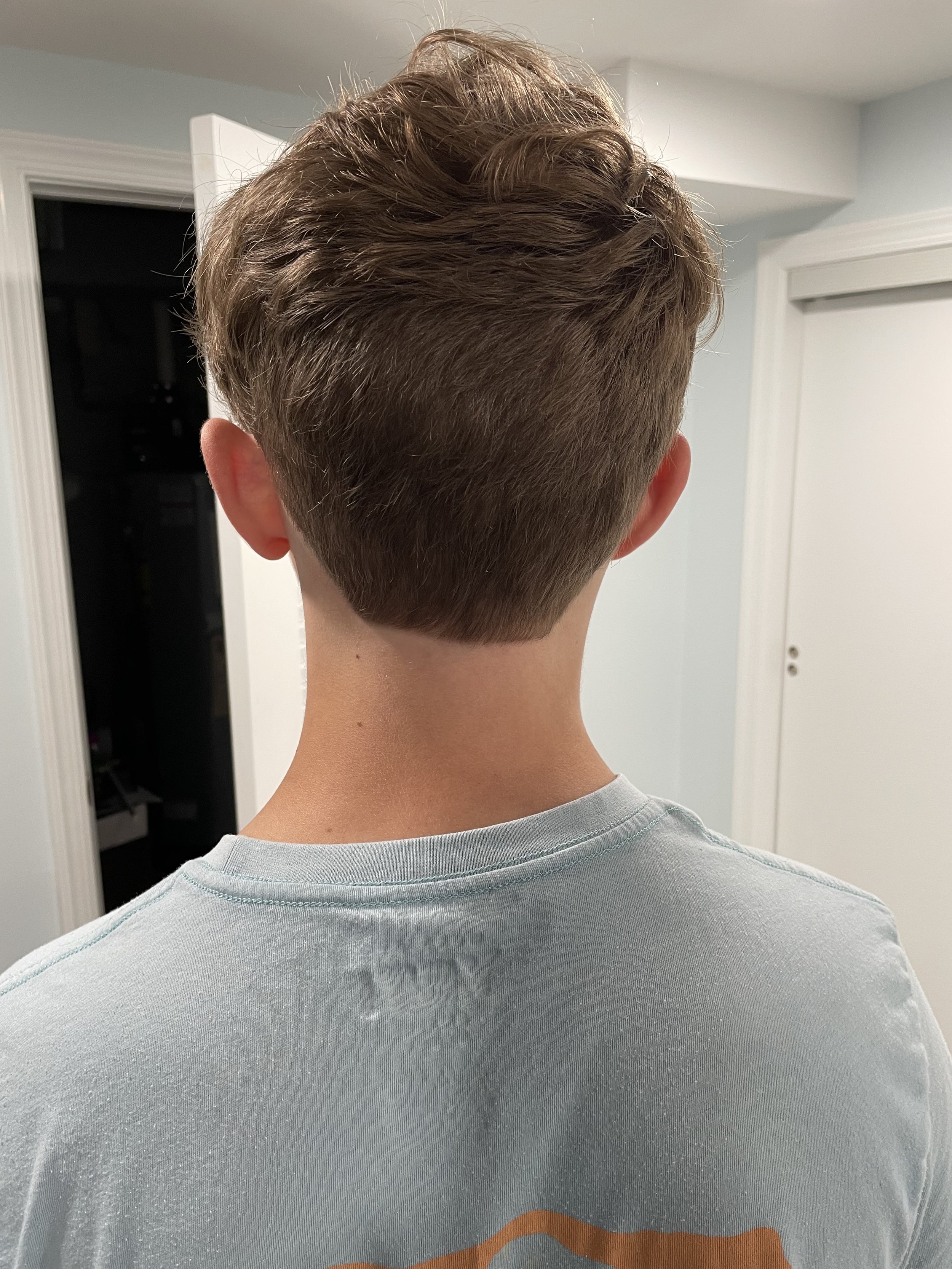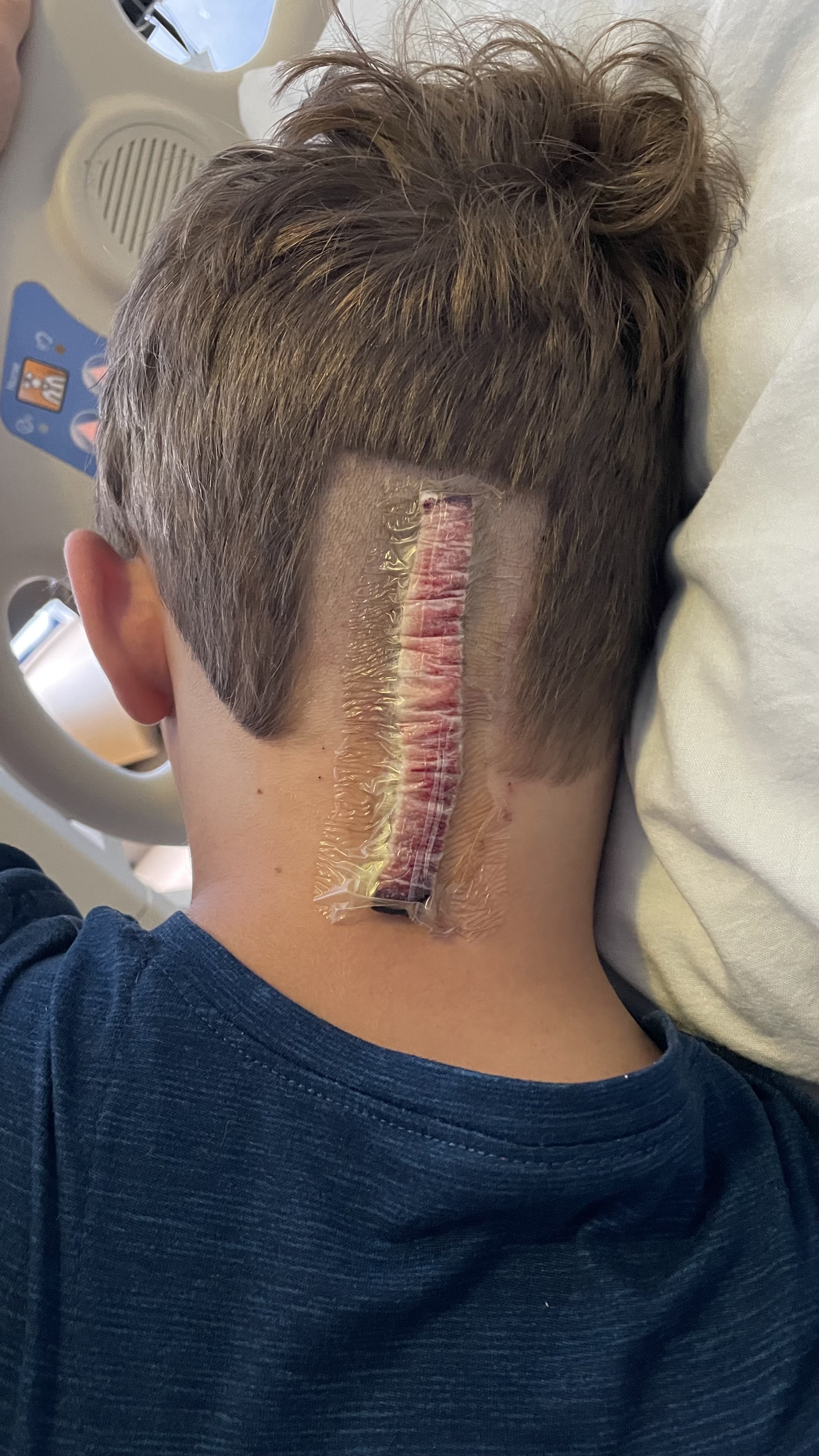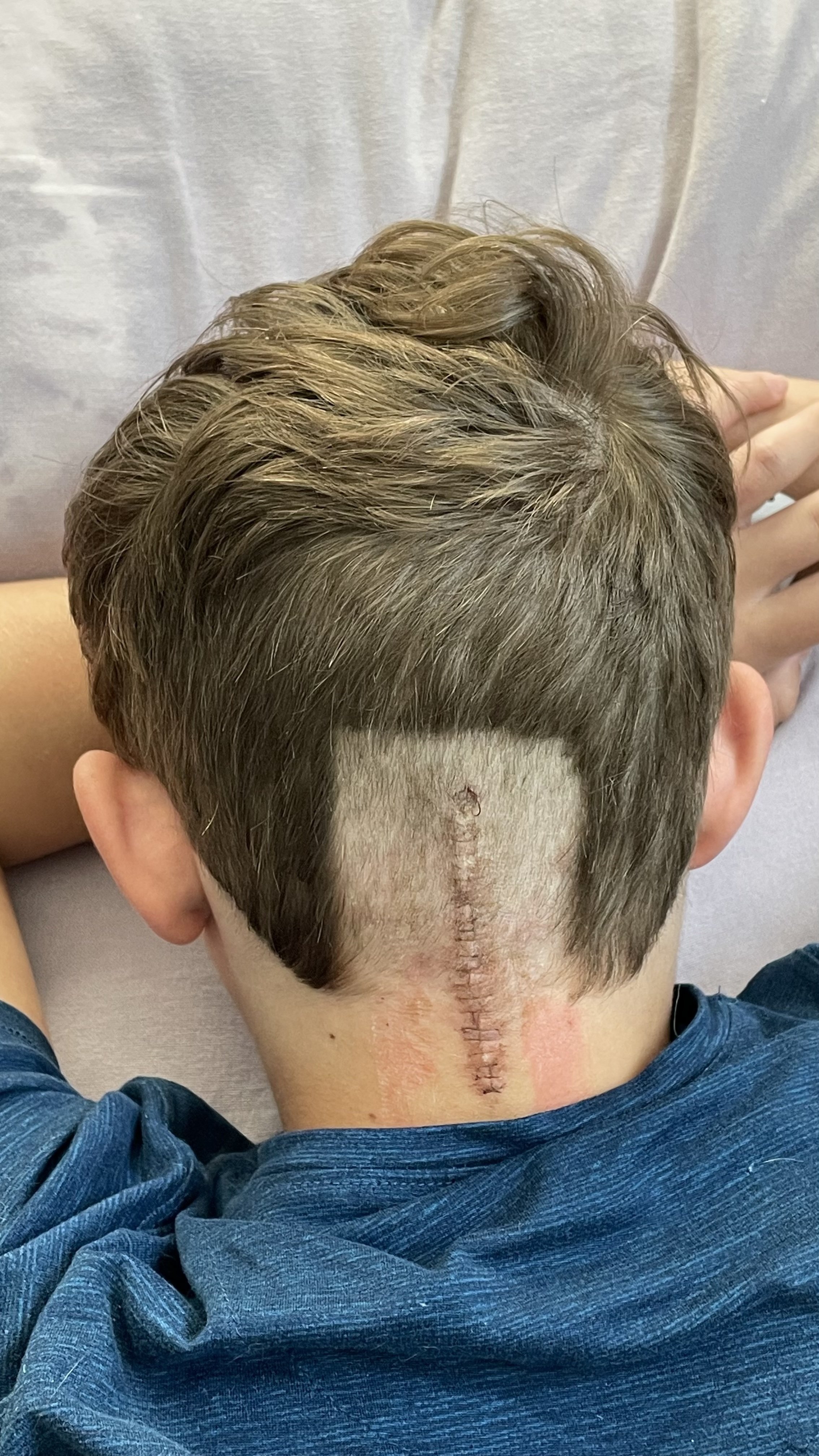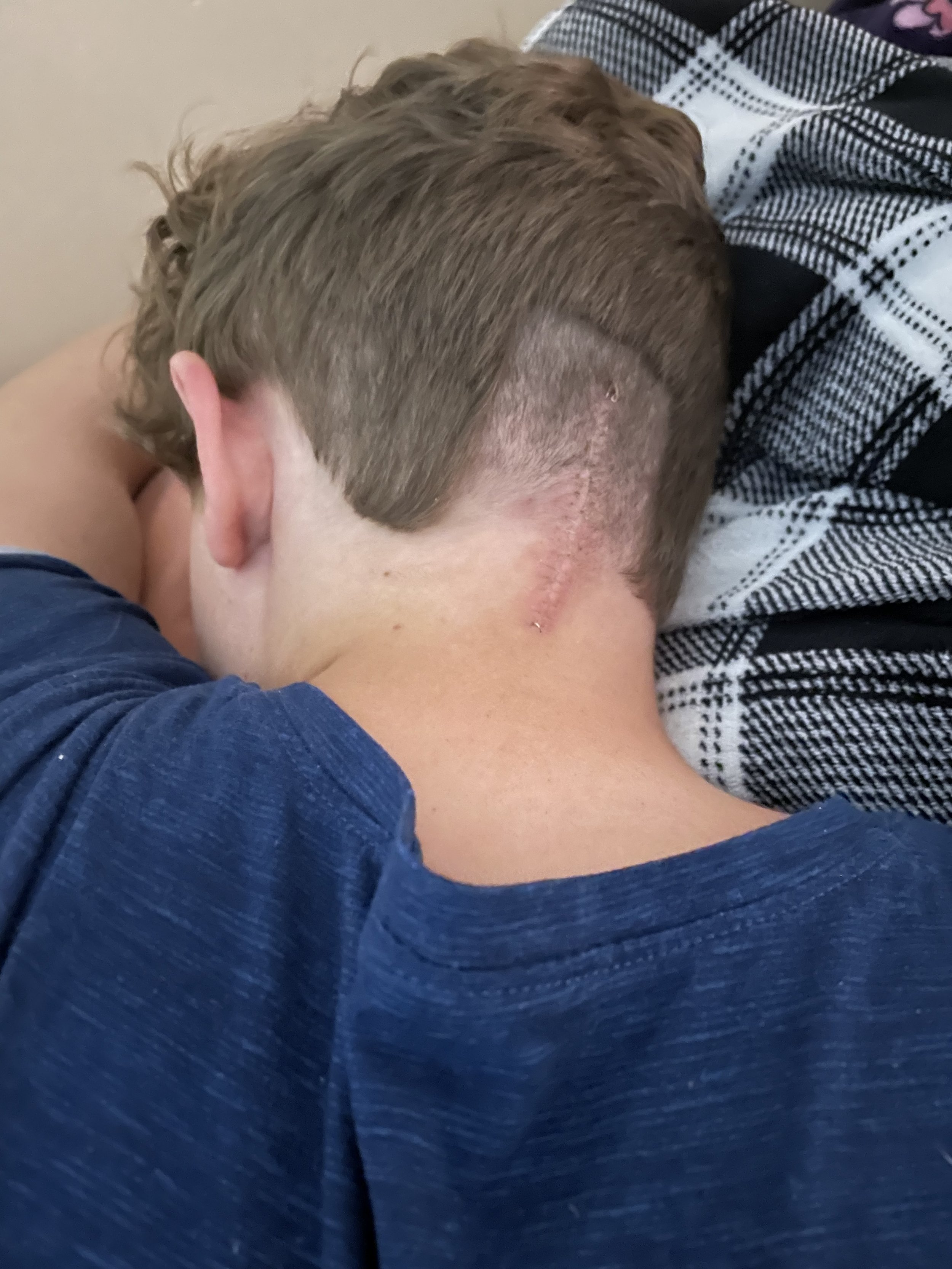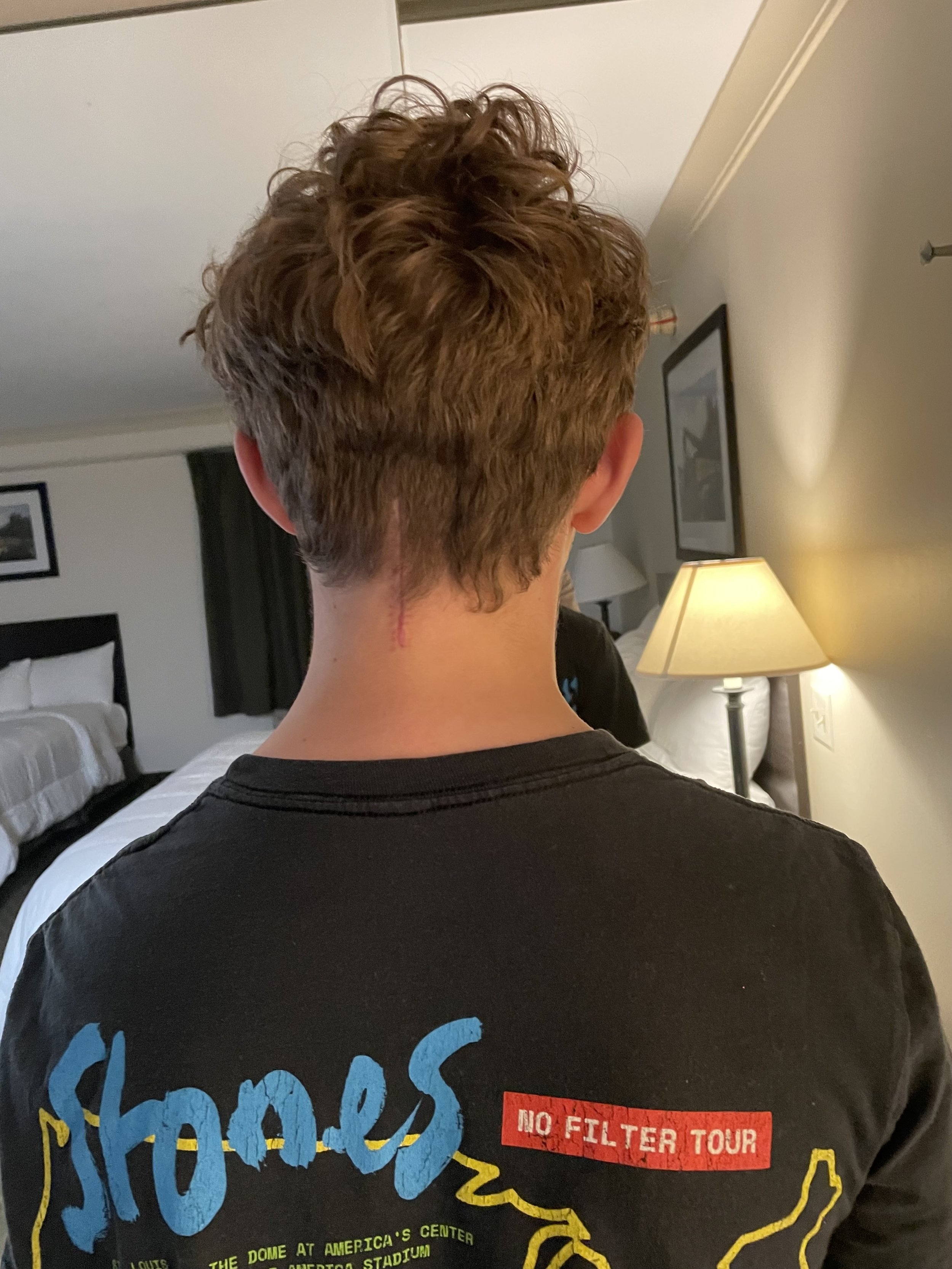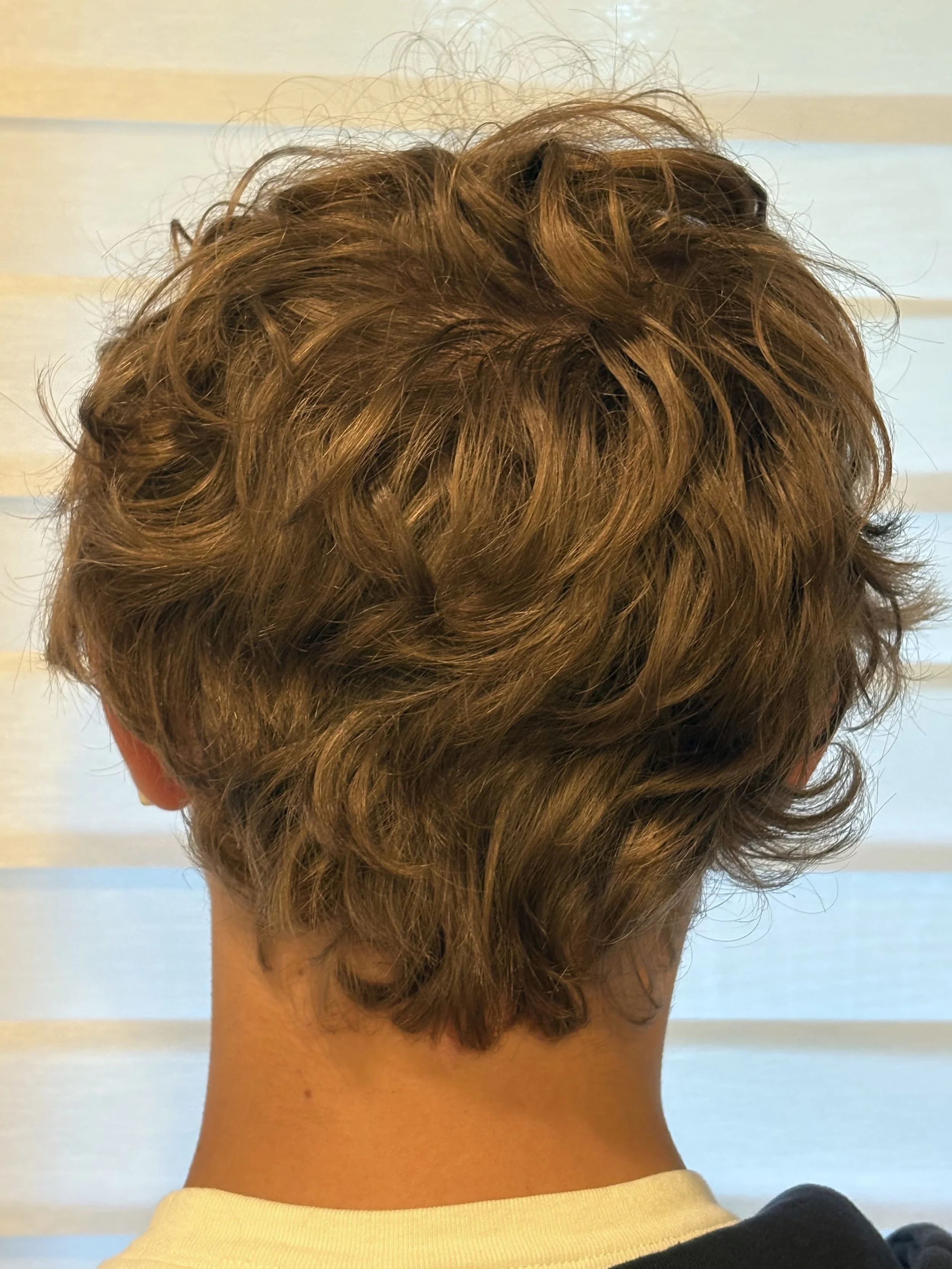My Journey with Chiari
Symptoms
For many years, I had “headaches,” but I didn’t think much of it since I thought they were just normal headaches, nothing more. Later, I came to realize that it was not a “regular” headache, but rather Chiari pain. I had no idea for many years that it wasn’t normal for my head to hurt when I coughed or sneezed, or wrestled, or did moderate physical activity.
Over time, I started talking more and more about my “headaches”, and what seemed like simple headaches to me turned out to be symptoms of something much more serious—Chiari malformation. I came to realize that most people got occasional headache feeling in the front of their head, while mine was more often in the back of my neck.
Getting a Diagnosis
Getting diagnosed with Chiari malformation was a long and frustrating process. Doctors always asked me to rate my pain on a scale of 1-10, and I was never good at that because I didn’t know what an 8 or 3 felt like, but I knew the ballpark. Some days, the pain was manageable—a 3 or 4 —but on bad days, it could spike to an 8 or 9, making it hard to focus or even move around comfortably. Some days I didn’t even feel it. The pain never lasted long, it could be a few seconds to a couple minutes. Talking to doctors about what I was feeling wasn’t always easy. I had to repeatedly explain my pain and symptoms, and when I did, sometimes it just wouldn't make sense, even to me. I didn’t know the cause of my pain, so I didn’t know what to avoid or stop doing, and it got frustrating. Finally we asked my pediatrician if there were specialists we could see about headaches, and I was sent to a neurologist.
Neurologists know about Chiari, and this doctor immediately said I needed an MRI scan to figure out what was going on. From listening to me, she thought it might be a Chiari Malformation. The MRI confirmed it. We also found out I had a syrinx, which is a fluid-filled cavity within my spinal cord. Having a syrinx seems reasonably common if you’ve got Chiari. Given that I had a syrinx, I was next sent to a consult with a neurosurgeon. My parents were of course with me through all of this, and they found a few good neurosurgeons to talk to.
What the doctors recommended
The first neurosurgeon recommended surgery, and it seemed likely that he would do a “bony decompression” and probably a “duraplasty” too. And as long as the sack surrounding my brain (the dura) was cut open, he would cauterize my cerebellar tonsils. Wow - that was a lot to take in! I’m rather fond of my brain, so wasn’t so psyched by the idea of having a bit of my brain zapped so it would shrink.
It seems there’s a lot of discussion in the medical community about how much should be done to address chiari. My research suggested that if you could get away with just a “bony decompression” - where they cut away a bit of your skull and the top of a vertebra or two to make more room for your brain - that would be a good thing. It gets more complicated and risky to open up the dura, although often that seems necessary. When the surgeon opens the dura, they then sew a “patch” over the opening. Think of the dura as a balloon around your brain, holding in all the cerebrospinal fluid. With a duraplasty, they cut open the balloon, and sew on a patch about the size of a silver dollar. That creates a bit more room, which of course is the goal - since my brain is too big!
To create even more room, they can cauterize the bit of the brain that is hanging too low. When they zap it, it curls up or shrinks a bit - again creating more room. I just felt nervous about the whole thing; it was a lot. It may not be rocket science, but it is brain surgery!
We went for a second opinion, and this surgeon thought I might only need the bony decompression and not the duraplasty. Both surgeons said they would do an ultrasound of my brain once I was on the operating table and they had cut away the skull - and then would make the decision about the duraplasty. We got the impression that the first surgeon wanted to do it all in one swoop, while the second surgeon might be more into taking things step by step.
A fair amount of people need a second surgery after they have the first Chiari surgery - as the first one didn’t do enough to resolve the issues. I can’t tell you the percentage, as the numbers were all over the place depending on what we read. But we read enough stories of people who had a duraplasty and still had issues afterwards that we decided to go with the surgeon who seemed less keen to do the duraplasty right away.
Preparing for surgery
Preparing for surgery was a mix of emotions—mostly nervousness, but also a sense of relief. There were a lot of appointments, scans, and instructions to follow, but I just went through the motions, knowing it had to be done. Surprisingly, I slept fine the night before; I wasn’t overthinking it, just ready to get it over with. Walking into the hospital, I still felt nervous, but I had already accepted what was coming. I just had to trust the doctors and focus on getting through it.
Eventually I said bye to my parents, and left to get prepped for surgery. Once I was in a gown and bed and ready, they called them in. The anesthesiologist said she was going to give me some happy juice to drink. Apparently it had fentanyl in it! They told us not to worry, as this is actually the intended use of the drug. Drinking that stuff was about the last step before they wheeled me off to the operating room.
My surgeon explaining the surgery.
One month out
One month out and reporting on my return to school.
Filmed the day before surgery
Surgery
Surgery lasted a few hours. To me it seemed like minutes, but it felt like a super long time to my family. Turns out I had just the bony decompression surgery. They did an ultrasound mid-surgery, and it indicated that I didn’t need a duraplasty. The surgeon told me he had music playing in the OR, and that my cerebrospinal fluid was pumping normally to the beat of the music. While I don’t remember anything from the surgery itself, I was told everything went great. When I woke up, I was really groggy but didn’t feel any pain or anything. And I was relieved to hear that it had gone as planned. Once I had woken up a bit more, they wheeled me to an intermediate care unit. That’s a unit that isn’t as intense as an ICU, but has a lot more nurses than a regular hospital ward. I even got my own room.
All the medical staff were very knowledgeable, caring and highly professional. They made sure I felt as comfortable as possible. As the pain would have been pretty intense without the right medication, I was constantly checked on and given various drugs to take - initially in my IV then later orally. They checked on me constantly and made sure I had everything I needed. Plus, one of the best parts was that I could order food whenever I wanted, which definitely made recovery a little easier. I was in bed for 3 days straight, periodically taking short walks around the hospital. My sleep schedule didn’t exist, every couple hours 24/7 doctors were coming in and asking me questions, performing tests, giving me more drugs…
Overall, I am very happy about how the surgery itself went. I had great care at the hospital and my doctor was super nice and knowledgeable.
The next few days after surgery
Day 2 after surgery
One week out
How I felt six days after surgery, as they had me reducing the number of meds I was on.
Six months out
Day-to-day, the pain is less because of the surgery and big changes to my lifestyle and hobbies.
Either day 3 or 4 after the surgery, when I was transitioning off of the IV pain meds.
Two weeks out
Two weeks out, I was up and about and only taking ibuprofen as needed, but still had a bit of a headache. Not too bad overall!
Two months out
Managed to go on a hike, but some of the symptoms are back.
11 months out
Day-to-day, the pain is less because of the surgery and big changes to my lifestyle and hobbies.
My Hair Journey
〰️
My Hair Journey 〰️
It might seem weird, but one of my concerns was walking around and going to school with a portion of my head shaved. I felt self-conscious, I was worried about how people would react or if they would stare, or what they would say. As it grew back, it was uneven and hard to manage. During school, I always kept my hood on. I didn’t take it off for weeks. Eventually, it grew back and looking back on it, it wasn’t that big of a deal.
